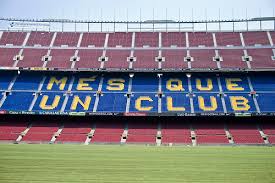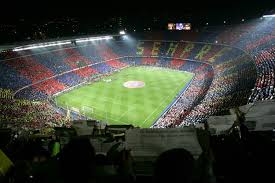Fun in the Sun
Along with all of the monuments, churches, and museums Spain has to offer, there are also a lot of other tourist attractions that are free and enjoyable for all ages. The beaches are definitely the place to go and hang out after a long morning of site seeing. Locals and foreigners are found at the beach till late in the evening swimming, relaxing, and socializing.
If you are looking for a larger beach that is a lot less touristy and noisy, Valencia is the place to go. There are a number of beaches along the Mediterranean Sea that welcome everyone. They offer umbrellas, chairs, restrooms, lifeguards, and many other facilities that accommodate for everyone visiting. Along the coast there were many beach huts and places to eat and enjoy a drink while also having a sea view.

Another popular place to hit up is the beach in Spain is in Barcelona. Barcelona is full of young tourist coming together to have a great time and enjoy the upbeat Spanish culture. The beaches are packed with locals wondering through the sand selling food, drinks, clothing, massages, and anything else you can possibly imagine. The large crowds of people and the local selling strategies tend to take away from the relaxing culture that a beach usual imposes, however it allows for a more recreational and fun beach atmosphere. To read more about the beach in Barcelona, I included the blog “Seaside in Barcelona” written by Paul Gentzler.

The beach in Barcelona is very easy to get to by metro. It is metro stop “Barceloneta” (Yellow Line, L4.) and then a short ten-minute walk from there. The beach is also in a walking distance from the Barcelona City Centre. It will take you about twenty minutes from the end of La Rambla, a popular tourist street in Barcelona. I personally recommend walking from the City Centre to the beach because it is a great way to see a lot on your way to the coast. Not only will you see the “Monument a Colom” the famous memorial to Christopher Columbus at the City Centre, but you will also get a view of the Port Vell de Barcelona, which is a spectacular view of the sea and marina in the city.
(http://www.barcelona-tourist-guide.com/en/attractions/barcelona-spain-beaches.html)

Las Ramblas
Las Ramblas is one of the major tourist streets in Barcelona that you will pass on your way to the beach. It runs 1.2 Kilometers through Barcelona, starting at Placa Catalunya where all of the major department stores are located. It then continues down to Port Vell and the marina district. The crowded street of locals and tourists consist of all sorts of vibrant street performers dressed up in costumes ready to entertain and take group photos. There are also birds and ferrets, artwork, and many other souvenirs that represent Barcelona that are sold on the Las Ramblas. The street can be quite hectic, but it all ties into the friendly and lively atmosphere of Barcelona. Las Ramblas is definitely the walk to take while visiting Barcelona.


Seaside in Barcelona

Paul Gentzler
It was a sunny, beautiful day in Barcelona with barely a cloud in the sky. Never before had I been to a Mediterranean city during any of my travels to Europe. So what would I do on such a gorgeous day? Naturally, I wanted to go to the beach! To hear the waves, to swim, and to bask in the sun would be the key to a perfect afternoon. I made my way to the Metro, situated right on the crowded La Rambla, and navigated my way to Barceloneta, the exit closest to the beachfront. At first, I had in mind that Barceloneta Beach would be a reprieve from the crazed, touristy area near Placa de Catalunya, but I was most definitely wrong.
As I was nearing the shore and caught my first glimpse of the sparkling Mediterranean waters and palm trees, I also noticed the mass of beachgoers crowded onto the seaside expanse before me. Not to be deterred by all of these people, I removed my sandals and stepped onto the sand, scanning for a place to lay my beach towel. When I finally laid my towel down, applied my sunscreen, and sprawled out, I felt the overwhelming sensation of what it was like to be on a truly European beach. In the distance behind me, mountains loomed on the upper landscape and on the horizon in front, it was water as far as I could see. Everywhere around me, there were topless women, comfortably baring their skin in public, men in tight Speedos, and groups of people of all nationalities carrying on with their friends in many languages. This was a first for me, considering the extent of my beach trips have only been on American shores, where the atmosphere is so different.
I began to think about how Barcelona offered so much for the traveler to find when he or she visits. All kinds of tourists come to Barcelona on a regular basis to revel in its cultural and environmental diversity. Therefore, it’s no small wonder why I didn’t find the beach scantly populated. With the unique culture of the city, Barcelona is a destination for people around the world. For a better idea of why Barcelona is a focal point for tourists can be found here: http://www.bcn.es/medciencies/latalaia/n1/eng/printable-tribuna.htm.
Taking this into consideration, I probably shouldn’t have been taken aback about all the people crowding the beach.
On this stretch of beach, locals compete for space with the throngs of tourists. To add to the mix, there are many people hawking services and goods to try to capture any available money from the beachgoers. And at the same time, the invisible threat of thieves is ever present as well. This creates an unstable dynamic on Barceloneta Beach. The politics of space require everyone there who wants to relax in the sun (local and tourist alike) to share very limited room and not aggravate those around them. Also, the number of merchants competing for scarce money that their potential customers are willing to spend makes them very aggressive. It seemed every moment, you heard an Asian woman offering someone a massage in broken English or you were offered some “cerveza, aqua, Fanta, Coca-Cola…” by another vendor. And with the threat of thievery, you always needed to keep your valuables close by or to have someone you know watch them while you took a stroll. A review of Barceloneta beach’s sights, atmosphere, and activities can be found here: http://www.partyearth.com/index.php?section=locations&subsection=place_details&city_id=11&place_id=618.
Not only is the beach an exciting and relaxing way to spend an afternoon, but has a lot of cultural relevance for the Catalan people. Perhaps this may explain why locals are drawn to the beach to be close to the sea. I believe that tourists spend their day on the beach perhaps to find out a little more of what it means to be a resident of Catalonia as well. Barcelona is, after all, a Mediterranean city and the Catalan capital and has been shaped over time by its ties to the water. During the time of the Catalonian Empire, the Mediterranean was the way to spread Catalan culture and conduct trade throughout this part of the world. This seafaring culture has remained to this day with those who believe themselves to be true Catalans. More on the history and ties to the sea that Catalan culture has can be found here: http://www.soulofamerica.com/barcelona-history.phtml.
As I went to take my first swim in the Mediterranean (which was ice cold but refreshing), it kind of made me envy the life that some people have in this place. It’s a sun-soaked, mountainous region by the sea which offers a lot for people of diverse interests. I’ll certainly be back one day, but will perhaps next time go to a beach that isn’t so overrun. Regardless, it was definitely worth at least one visit.


 arkets are where loyal people do their shopping and actually form relationships with their vendors who they visit continuously over and over again. It is a cultural difference not to buy in bulk, but rather make more frequent trips to the market and buy as you are in need, rather than stock your fridges for the next depression.
arkets are where loyal people do their shopping and actually form relationships with their vendors who they visit continuously over and over again. It is a cultural difference not to buy in bulk, but rather make more frequent trips to the market and buy as you are in need, rather than stock your fridges for the next depression.











